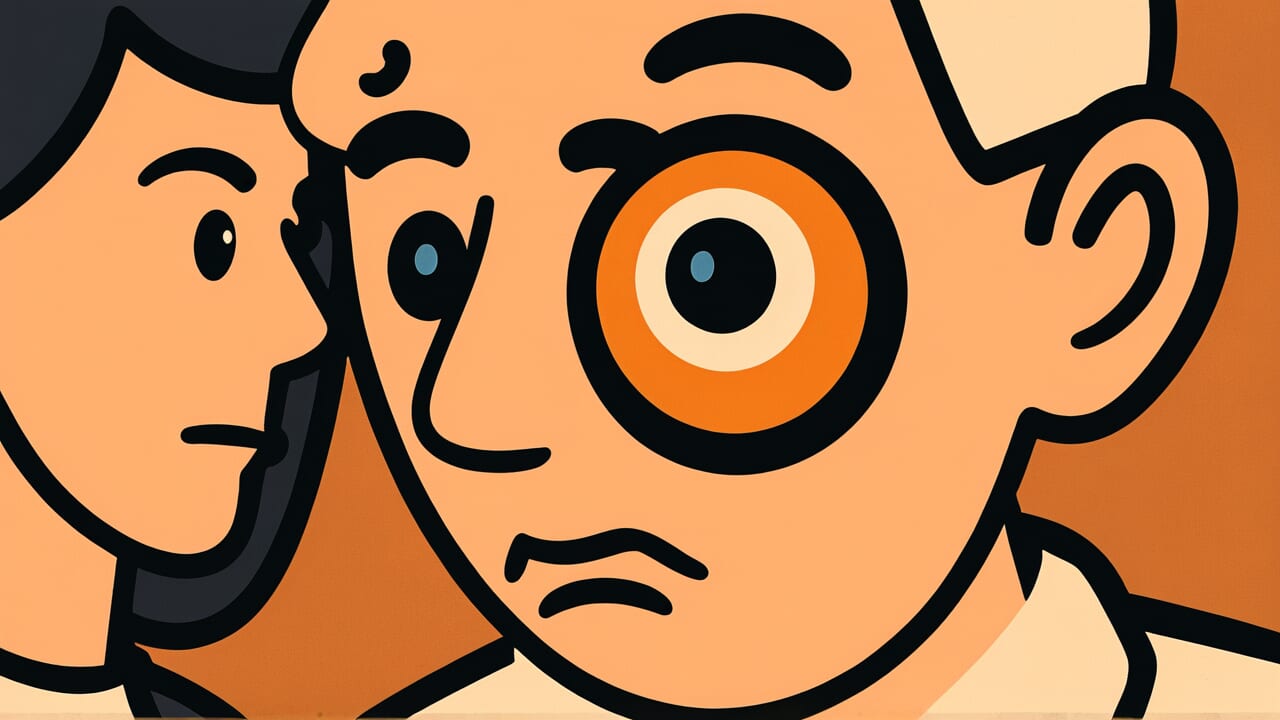How to Read “Another person’s correct eye”
tanin no masame
Meaning of “Another person’s correct eye”
“Another person’s correct eye” is a proverb that means other people’s eyes are fair and strict. Others can see your flaws better than you can see them yourself.
When we look at ourselves, we naturally become subjective. We tend to overlook our flaws or underestimate them. But from another person’s perspective, these flaws are clearly visible.
This proverb is used when warning someone against being too easy on themselves. It’s also used when advising someone to accept criticism from others with an open mind.
When you notice a gap between how you see yourself and how others see you, this expression helps you recognize the importance of objective viewpoints.
Even today, this saying teaches us to understand the limits of self-awareness. It reminds us to value feedback from others. Its wisdom remains relevant in modern times.
Origin and Etymology
The word “正目” (masame) in “Another person’s correct eye” is not commonly heard today. It means “correct eye” or “fair eye.” There is no established consensus about when this proverb first appeared in literature.
However, the structure of the phrase suggests it contains ancient Japanese insights. These insights relate to the difficulty of self-awareness and the value of other people’s perspectives.
The expression “正目” carries the meaning of an unbiased, objective viewpoint. When we look at ourselves, our vision easily becomes too lenient or unnecessarily harsh. Our emotions sway our judgment.
But another person’s eye is relatively free from such emotional bias. It can see things more fairly. This is the core idea behind the proverb.
This proverb likely emerged from Japan’s cultural foundation. Japanese society has long valued “the eyes of the world” and “evaluation from others.” The culture places objective external evaluation above personal internal self-assessment.
This value system gave birth to such expressions. The proverb crystallizes a common experience: others often see our flaws and problems better than we do ourselves.
Usage Examples
- I thought my presentation preparation was perfect, but when I had someone look at it with another person’s correct eye, many areas for improvement were found
- I thought I was speaking politely, but as the saying “another person’s correct eye” suggests, a colleague pointed it out and I finally noticed my language problems
Universal Wisdom
The universal truth shown by “Another person’s correct eye” is the fundamental limit of human self-awareness. We tend to think we know ourselves best. But actually, nothing is harder to see objectively than ourselves.
This is because our view of ourselves always passes through an emotional filter.
Acknowledging our own flaws causes psychological pain. That’s why people unconsciously activate defense mechanisms. We look away from our problems or justify them.
On the other hand, others don’t have such emotional entanglements. They can see us more calmly and more accurately.
This proverb has been passed down for so long because “objectivity” has always held precious value in human society. No matter how excellent a person is, blind spots emerge from a single perspective alone.
Only with the mirror of another person’s eye can we grasp our complete picture.
Our ancestors understood that the essence of humility lies here. People who can accept criticism from others with an open mind are those who can truly grow.
This proverb teaches us the danger of self-contained thinking. It reveals an essential truth about human relationships: people are polished only through interactions with others.
When AI Hears This
The human eye can see clearly only within a narrow range of 2 degrees in the central visual field. This is as narrow as the eye of a needle.
In other words, we constantly live by choosing “where to look.” This hides the reason why other people’s flaws catch our attention so easily.
The brain’s attention system has interesting characteristics. When looking at yourself, the brain uses an “internal model.” This is a self-image created from past memories.
This model takes priority over actual visual information. For example, when you look in a mirror, your brain automatically fills in missing information. It recognizes your face as the familiar one you’re used to seeing.
There’s actually a “blind spot” where the optic nerve connects to the retina. You don’t usually notice it because of the same mechanism.
When looking at others, it’s different. The brain concentrates attention resources to obtain new information. Especially for “parts that differ from predictions”—flaws and failures—the brain’s anterior cingulate cortex reacts strongly.
This function evolved as an error detection system. The high-resolution central vision locks onto that part. Details become vividly visible.
In other words, seeing other people’s flaws clearly is not a moral issue. It’s a structural asymmetry in visual processing. A completion filter is applied to yourself. A high-resolution magnifying glass is pointed at others.
Knowing this neural mechanism allows you to objectively view your tendency to be critical.
Lessons for Today
What this proverb teaches modern you is the importance of humbly listening to others’ voices. Now that self-expression on social media has become normal, we have more opportunities to express our thoughts and actions one-sidedly.
But opportunities to receive frank feedback from others may have actually decreased.
Whether at work or school, try to accept casual criticism and advice from people around you without becoming defensive. They’re not denying you. They’re teaching you possibilities you haven’t noticed.
Especially harsh words from people you trust are actually the greatest gifts.
At the same time, don’t forget that you yourself can become “another person’s correct eye” for someone. If you wish for a loved one’s growth, sometimes you need the courage to share honest opinions.
Relationships where people can be honest mirrors for each other create the best environment for growth.
No one is perfect. That’s exactly why an attitude of supporting, teaching, and growing together is important.



Comments